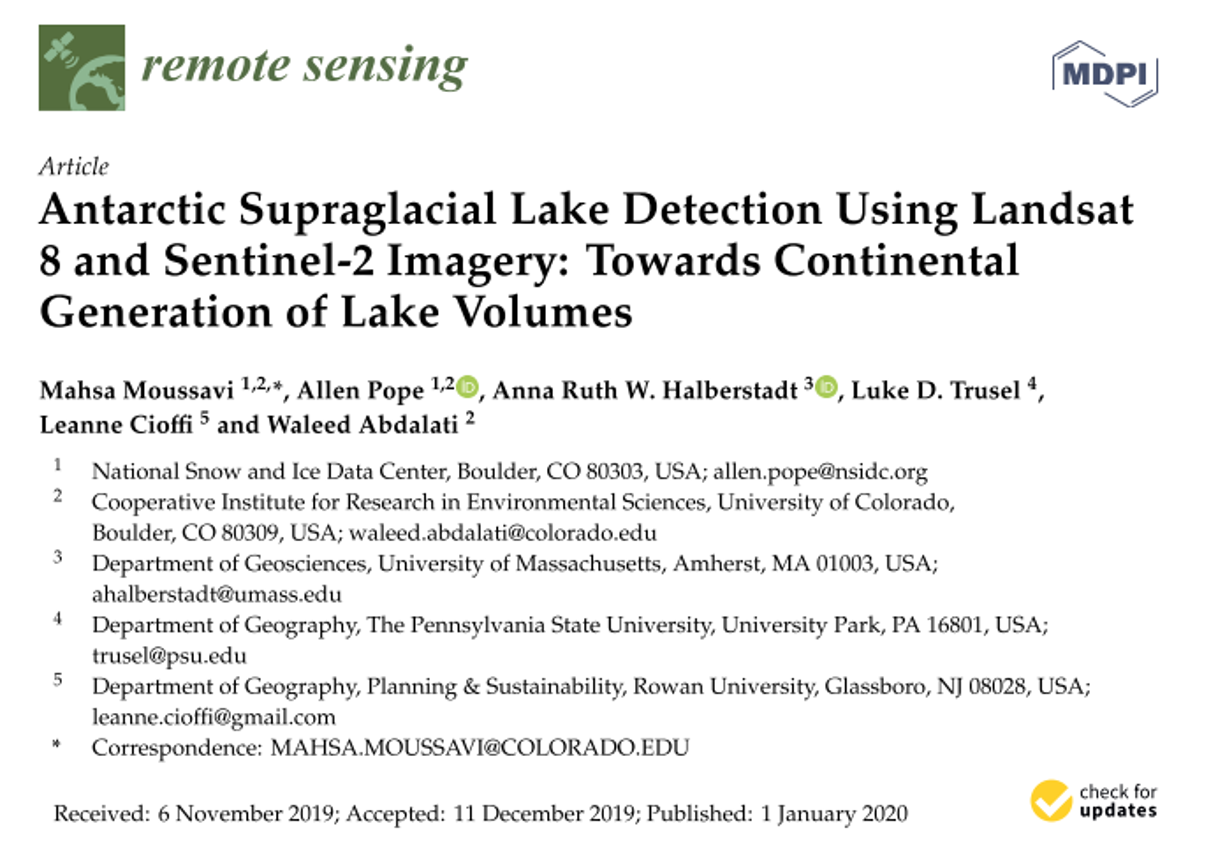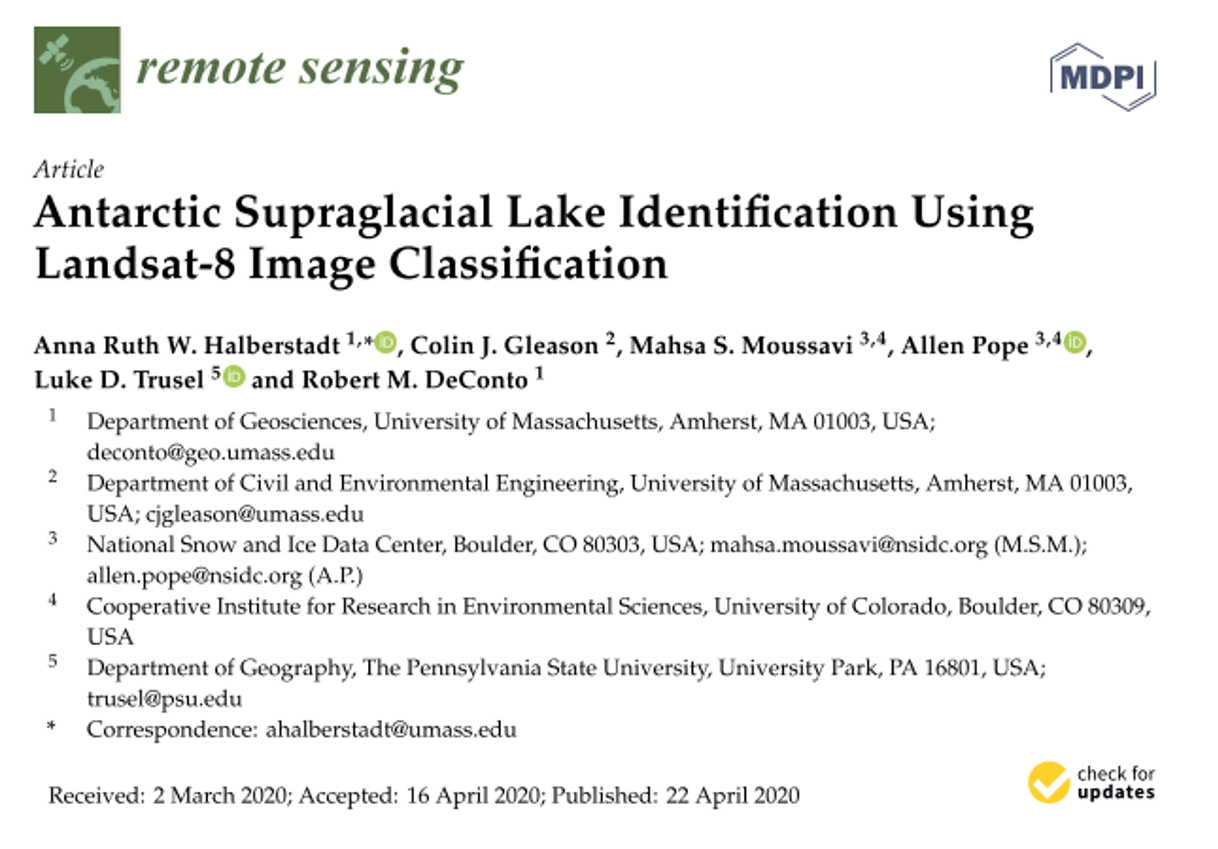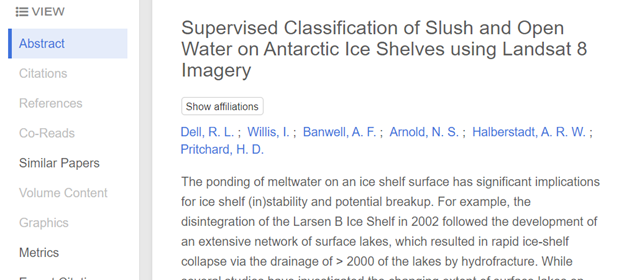Meltwater on ice shelves
While past warm periods can provide a glimpse of possible Antarctic futures, these epochs occurred many millions of years ago which hampers our ability to reconstruct past conditions. During the ‘modern warm period’ – today – we have orders of magnitude higher resolution datasets than the geologic record of past warm periods. Additionally, building a better understanding of modern processes can reveal how the ice sheet may have behaved in the past.
Specifically, the stability of Antarctica’s ice shelves during warm periods is of particular concern: ice shelves, although floating, act as a cork in a horizontal wine bottle and ‘stop up’ ice flow from the interior of the ice sheet. Ice shelves can be destabilized by surface melt water, so understanding meltwater evolution during the last few decades is crucial to understand ice shelf stability and predict future ice loss from Antarctica. Although a wealth of satellite imagery is available across the continent, there is too much information for a human to interpret – for example, the Landsat sensors collect images at 30 m resolution every two weeks for the last decade!
My research develops automated methodologies to identify surface meltwater from satellite imagery. I use Google Earth Engine to train supervised image classification algorithms and detect meltwater features.
See the resulting algorithm in action: slide the bar to compare a ‘true color’ satellite image containing meltwater lakes, clouds, and rock outcrops (left) to the classification result from the trained algorithm (right).
Read more about meltwater classification from satellite data:


